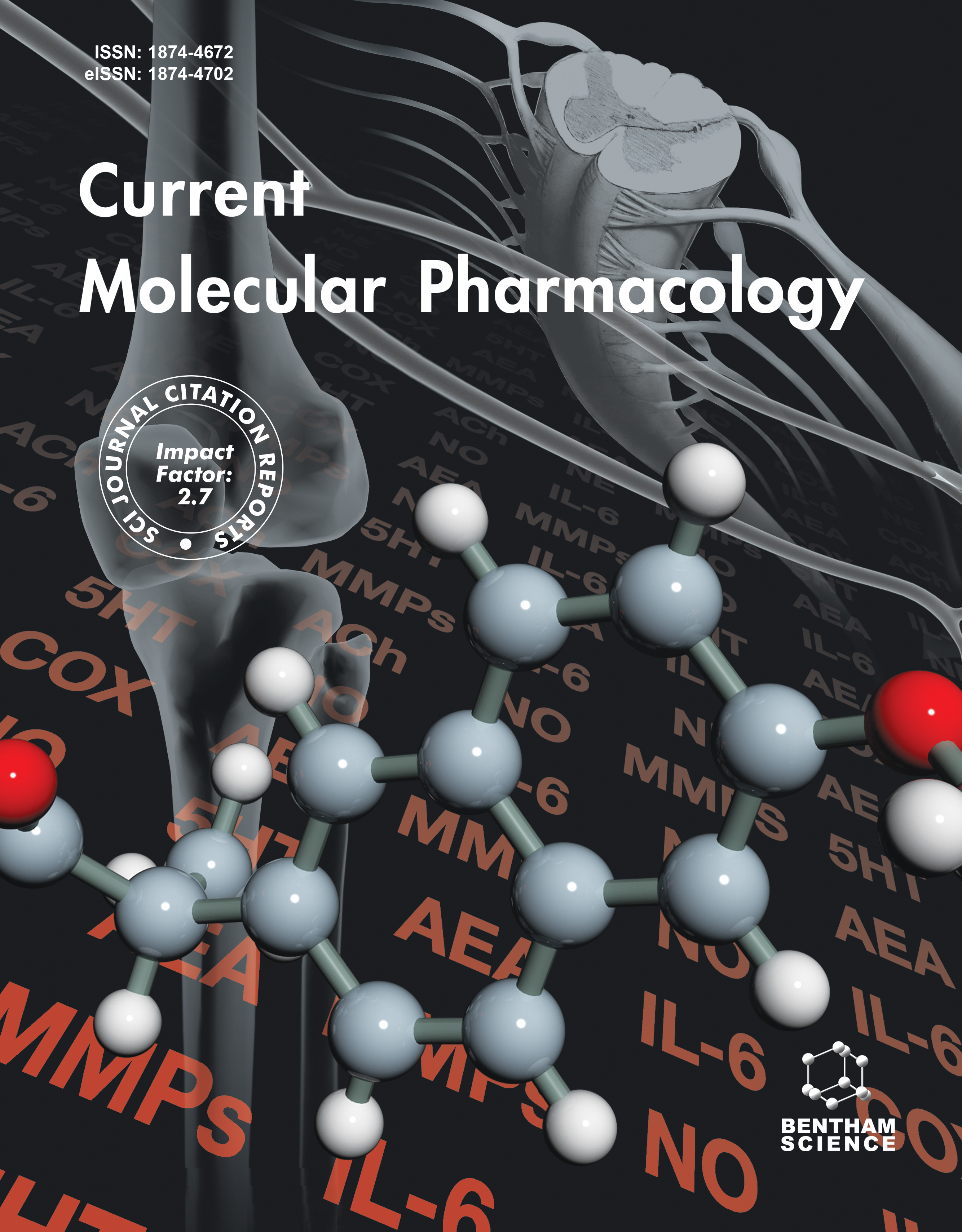- Home
- A-Z Publications
- Current Molecular Pharmacology
- Previous Issues
- Volume 12, Issue 2, 2019
Current Molecular Pharmacology - Volume 12, Issue 2, 2019
Volume 12, Issue 2, 2019
-
-
Does the Development of Vaccines Advance Solutions for Tuberculosis?
More LessAuthors: Manaf AlMatar, Essam A. Makky, Husam AlMandeal, Emel Eker, Begüm Kayar, Işıl Var and Fatih KöksalBackground: Mycobacterium tuberculosis (Mtb) is considered as one of the most efficacious human pathogens. The global mortality rate of TB stands at approximately 2 million, while about 8 to 10 million active new cases are documented yearly. It is, therefore, a priority to develop vaccines that will prevent active TB. The vaccines currently used for the management of TB can only proffer a certain level of protection Read More
-
-
-
MiR-597 Targeting 14-3-3σ Enhances Cellular Invasion and EMT in Nasopharyngeal Carcinoma Cells
More LessAuthors: Lisha Xie, Tao Jiang, Ailan Cheng, Ting Zhang, Pin Huang, Pei Li, Gebo Wen, Fanghong Lei, Yun Huang, Xia Tang, Jie Gong, Yunpeng Lin, Jianke Kuai and Weiguo HuangBackground: Alterations in microRNAs (miRNAs) are related to the occurrence of nasopharyngeal carcinoma (NPC) and play an important role in the molecular mechanism of NPC. Our previous studies show low expression of 14-3-3σ (SFN) is related to the metastasis and differentiation of NPC, but the underlying molecular mechanisms remain unclear. Methods: Through bioinformatics analysis, we find miR-597 is the prefer Read More
-
-
-
Mephedrone Impact on Matrix Metalloproteinases Activity - Do they Influence the Memory Processes?
More LessBackground: The use of drugs of addiction, as mephedrone, is associated with functional neuronal disorders due to remodeling of the nervous tissue. Key enzymes in remodeling are extracellular matrix (ECM) proteases like matrix metalloproteases (MMPs). Recently, MMPs have been of great interest as some studies point to a fact that the alterations in structural remodeling of synaptic connections modify learning-depen Read More
-
-
-
Therapeutic Potential of Morin in Ovalbumin-induced Allergic Asthma Via Modulation of SUMF2/IL-13 and BLT2/NF-kB Signaling Pathway
More LessAuthors: Amit D. Kandhare, Zihao Liu, Anwesha A. Mukherjee and Subhash L. BodhankarBackground: Allergic asthma is a chronic immune-inflammatory disorder, characterized by airway inflammation and airway hyperresponsiveness (AHR). Morin is a natural flavonoid reported to exhibit inhibitory action against IgE-mediated allergic response. Aim: To determine the efficacy of murine model of ovalbumin (OVA)-induced AHR inhibition by morin and decipher the molecular mechanism involved. Materials and Meth Read More
-
-
-
Activation of GLP-1 and Glucagon Receptors Regulates Bile Homeostasis Independent of Thyroid Hormone
More LessBackground: Balanced coagonists of glucagon-like peptide-1 (GLP-1) and glucagon receptors are emerging therapies for the treatment of obesity and diabetes. Such coagonists also regulate lipid metabolism, independent of their body weight lowering effects. Many actions of the coagonists are partly mediated by fibroblast growth factor 21 (FGF21) signaling, with the major exception of bile homeostasis. Since thyroid hormone is Read More
-
-
-
Alterations of RNA Metabolism by Proteomic Analysis of Breast Cancer Cells Exposed to Marycin: A New Optically Active Porphyrin
More LessObjective: Marycin is a porphyrin-type compound synthetically modified to spontaneously release fluorescence. This study is aimed at understanding possible mechanisms that could account for the antiproliferative effects observed in marycin. A proteomic approach was used to identify molecular effects. The proteome of proliferating MDA-MB-231 breast cancer cells was compared with that of marycin-treated c Read More
-
-
-
Assessment of Genotoxicity of Levosimendan in Human Cultured Lymphocytes
More LessAuthors: Abeer M. Rababa'h, Omar F. Khabour, Karem H. Alzoubi, Dua'a Al-momani and Mera AbabnehBackground and Objective: Levosimendan is a positive inotropic and a vasodilator agent with pleotropic characteristics that include antioxidation, anti-inflammation and smooth muscle vasodilation. Methods: In this study, the effects of levosimendan (0, 0.1, 1, 10, and 20 μg/ml) on oxidative DNA damage and sister-chromatid exchanges (SCEs) were evaluated in human cultured lymphocytes. Results: The results showed that l Read More
-
Most Read This Month
Article
content/journals/cmp
Journal
10
5
false
en


